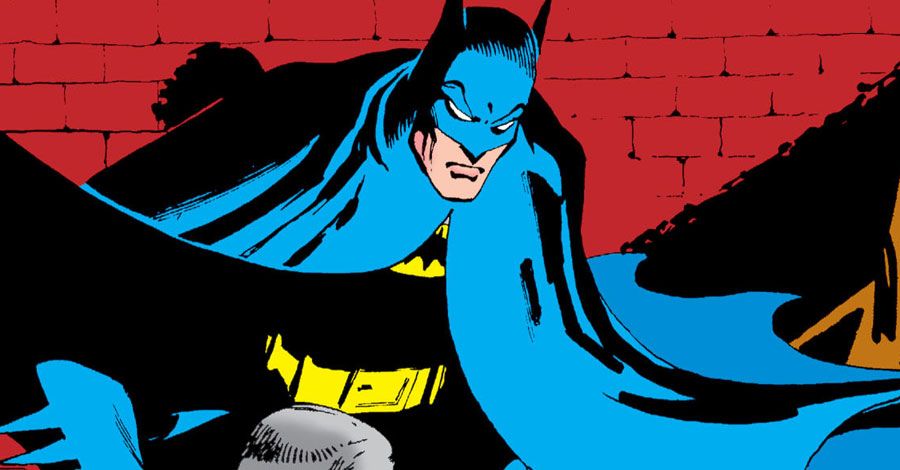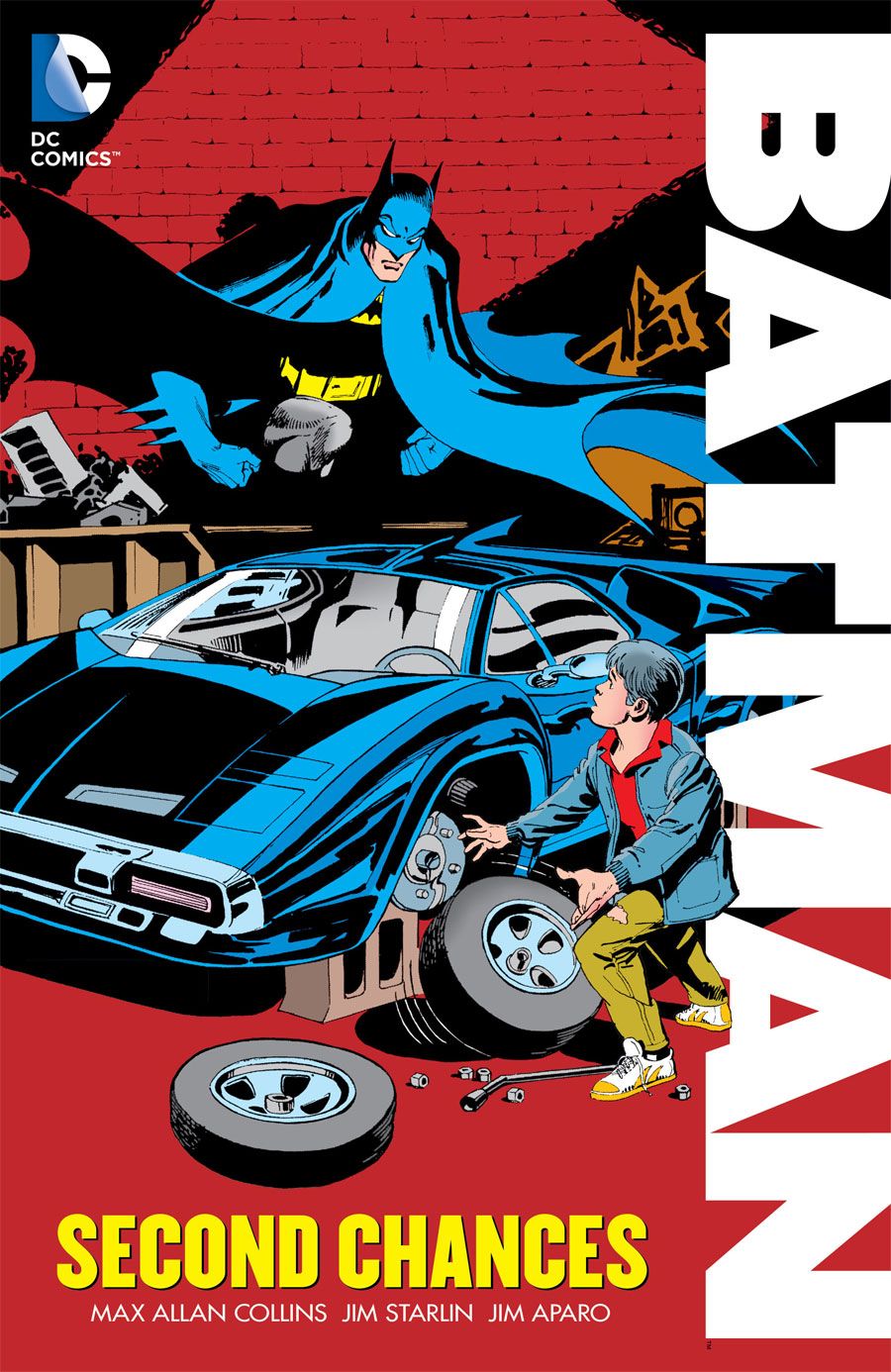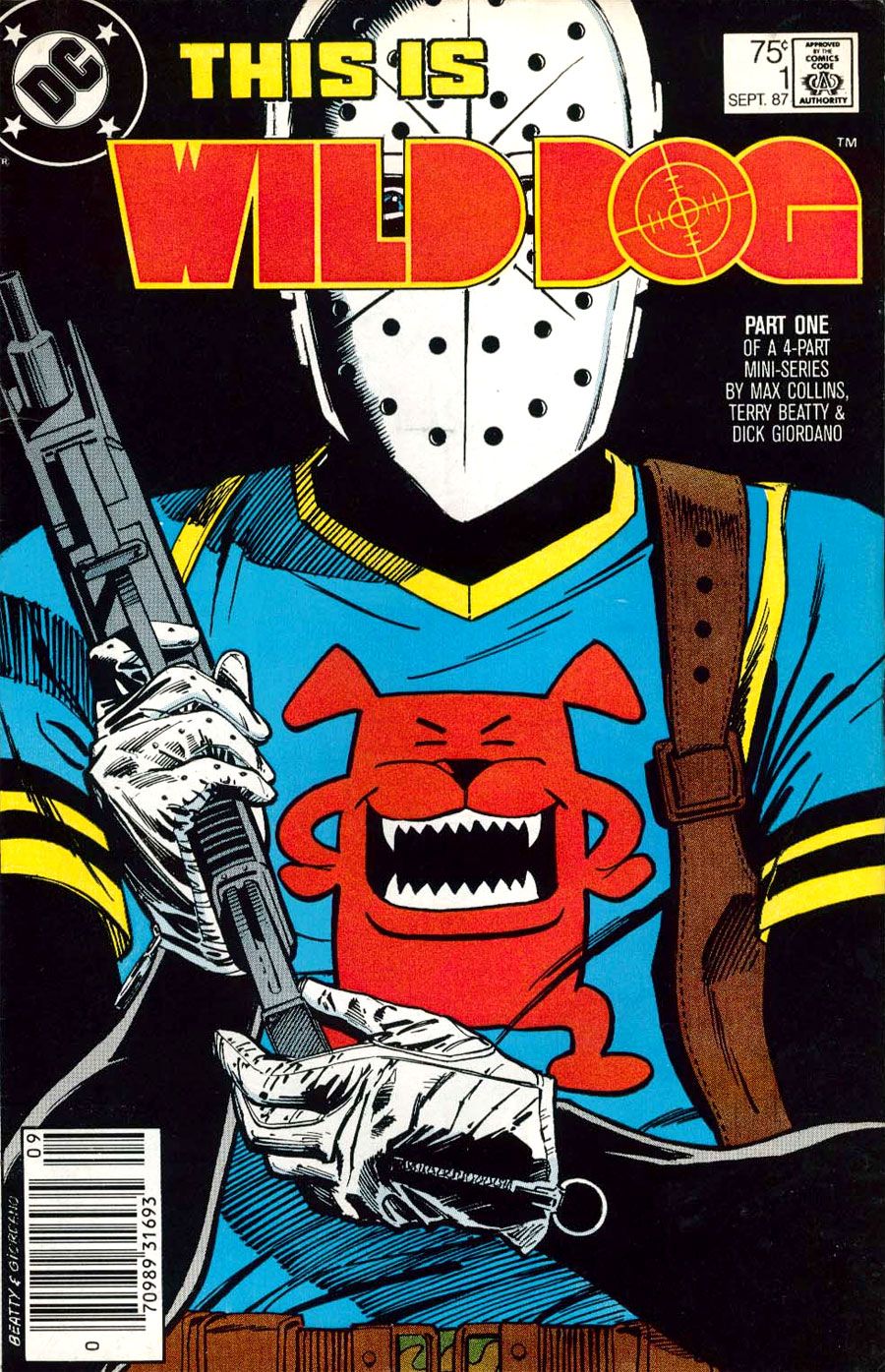Max Allan Collins is such a prolific novelist, it might be easy to forget that he's been writing comics regularly for decades. From the "Road to Perdition" series and numerous "CSI" miniseries to his and co-creator Terry Beatty's long-running "Ms. Tree" and beyond, Collins career spans multiple genres. He's also become closely tied to a few comic book crimefighters, including Dick Tracy. Collins wrote the "Dick Tracy" comic strip for many years and is involved with the IDW/Library of American Comics series "The Complete Chester Gould's Dick Tracy."
Now, Collins' time in the DC Universe is being revisited in "Batman: Second Chances," a collection of comics Collins wrote that were illustrated by Jim Starlin and Jim Aparo in the 1980s. In addition to the reissuing of his Gotham-based work, next year sees the release of Collins and Beatty's "Wild Dog: Unleashed," which the writer describes as "very much the precursor of 'Kick-Ass,'" and the arrival of the "Quarry" television series, based on his series of novels.
CBR News: How did you first get the job of writing "Batman?"
Max Allan Collins: It grew out of the enthusiasm among comics professionals for "Ms. Tree," the indie comic book that Terry Beatty and I did.The book was quite violent and was dealing with controversial topics in fairly off-the-wall ways.Also, at a time when comic book art was going experimental, Terry and I were doing what we called an experiment in coherence, reverting to EC and syndicated comic strip style. We were pretty much the first of our erato do crime comics minus costumed hero trappings.
My memory isn't the best, but I believe Denny O'Neill approached me at a San Diego Comic Con.I had been a Batman fan since childhood, so I was thrilled.My obsession as a kid had been "Dick Tracy," and I viewed Batman as Dick Tracy in superhero drag. When I was reading Batman in the '50s, as a very little kid, Superman and Batman were about it for heroic comics.I thought I was a big Bob Kane fan, but it turned out I was really a Dick Sprang fan.
What was it like working with Denny O'Neill, who was editing the Batman line?
I had surprisingly little contact with Denny. I had no idea he was displeased with my work until very deep into my run.Remember, there was no e-mail, and if I had four phone calls from him in my year on the book, I'd be surprised. He was very quiet.The problem, I'm afraid, was an odd one -- we each respected the other so much, we never really collaborated.I was just blundering along with my usual confidence, and Denny was just not stepping on my toes.A recipe for disaster.
To Denny's credit, I think he came to realize we were both at fault.He chose my story with [Norm] Breyfogle for a "Best of Batman" anthology, and later assigned me to the Elseworlds graphic novel "Scar of the Bat," my Eliot Ness/Batman story.He was very pleased with that.I wish it had been included in the new anthology.
You didn't create Jason Todd, but I'm curious how much of the character's development was you and how much freedom you had?
I'm afraid I don't remember.I just know that I was asked to do a reboot.Starting over was definitely not my idea.I may have come up with the Jason Todd as juvie notion.It seemed that if Batman was going to essentially fire Dick Grayson because he didn't want to put Robin in harm's way anymore, then the only way he'd take a new Robin on was if the kid might die or otherwise go down a criminal path if he didn't.
I had a whole storyline developed that was later ignored that had to do with Jason's father and Two-Face. I frankly don't remember exactly where I was headed, just that the book dropped my concept and wentin a direction that ultimately led to the fans voting Jason's death.
Why did you end up quitting the book?
I was, from the very beginning, surprised by the lack of direction.I asked for a bible on the comic book, but there was none -- it's frickin' Batman, and there's no bible? I mean, I would ask where exactly the Wayne mansion was -- how far from Gotham City?Nobody knew.I asked for a layout of the Bat Cave.There wasn't one. I found this nebulous approach to so important a character really astounding.
Denny did some things editorially that drove me crazy.In the first issue of the reboot (#408), I had opened with a caption indicating that we were starting over. It was a little arch, something like, "In the kingdom of Gotham there was a dark knight with a faithful squire," but it did indicate a fresh start or anyway a new entry point.Denny cut it, without discussing it with me.I guess I knew we were really in trouble when I had Batman get hit over the back with a baseball bat, hard enough to splinter the bat, and Batman went down from the blow -- Denny said I made Batman look weak, and changed it.I can't write about a character who is impervious to baseball bats splintering across the back.
I'm sure Denny had plenty of reasons to be unhappy with my work, but the thing is, he rarely spoke to me about it. I got a call from Dick Giordano once, and he began lecturing me about what I was doing wrong. I patiently explained that the things he didn't like were all Denny restructuring my work -- for example, crosscutting between scenes that Denny had taken apart and made separate.At the end of the callGiordano apologized.
Reading between the lines, I think Denny expected my Batman to be as gritty as my Ms. Tree work.But my vision of Batman was more traditional -- not campy or kid stuff, but not so dark.Remember, I came on right after Miller's "Year One" run, so I looked pretty soft to a lot of readers.
The major problem, though, was the succession of artists. I was teamed with a talented guy named Chris Warner.We were going to be the new hot team.Then Warner missed his deadlines, got fired after a single issue,and one artist after another was trooped in -- often the artist doing part two of a two-parter would not even have access to the character designs of the previous artist. It was a mess.In eight issues, I had five artists. The only one I had for any kind of sustained run was Dave Cockrum, who didn't understand my approach at all.
In fact, it was something Cockrum did that made me call Denny and quit.I created a character called the Mime, who was something of a dry run for Harley Quinn, and there was a bit about a policeline-up where a bunch of mimes were called in so the guilty mime could be picked out.The gag was that all the mimes lookedidentical -- my script spelled it out.Cockrum drew a bunch of different-looking mimes -- fat, tall, short, skinny.I called Denny and quit.
There was an issue I wrote that was neverused, though I laterused it as thebasis of one of the two prose Batman stories I did.
A few years later, when they had the poll, should Jason Todd die, were you horrified? Surprised?
Amused. I'm one of, if not the most hated Batman writers, so I take a perverse pride in that.But frankly, it wasn't my version of Jason Todd that was really hated, but the one that followed.
If you want to see a better representation of my vision on Batman, read "Child of Dreams" with Kia Asamiya.My adaptation was a very free one.
It sounds like you had a very different take on Jason Todd than later writers.
I, frankly, didn't pay any attention to what the later writers did with the character. I had high hopes for my Batman run -- I really love the character, and grew up reading it -- and the disappointment of actually writing the book took my enthusiasm away.
Two interesting things about my work on Batman, particularly since I've been the subject of so much criticism.Toys "R" Us went to DC, wanting to package some Batman comics for their chain, to take advantage of the new burst of interest in the character.They read three or four years of Batman, looking for material.What they chose was mine -- just mine.And I made a whole lot of money off those reprinted issues.Royalties are the best revenge.Critics can dismiss that by saying that my stuff was chosen because it was the most juvenile.That's fine -- the money spent well, and I like the idea that younger readers came aboard.
The other thing is that some people high up at DC appreciated my work on Batman, and I was hired to develop a bible fora new Batman strip, and to write it with the greatMarshall Rogers drawing. I did the first continuity, a Catwoman story, which I really wish had been reprinted in the new anthology.But my Dick Tracy bosses at the Chicago Tribune Syndicate were furious that I was doing another strip, and forced me off Batman.They didn't really have any right to do that, but they threatened to both fire me and sue me, so I had to fade.
Did you ever think that Todd would become this significant character? I mean, he was killed off, but he came back. He's in the New 52.
No. I would much rather have written the Dick Grayson Robin.
DC just announced a collection of another project you wrote, "Wild Dog: Unleashed," which will be out next year. What was this book?
Then-DC editor Mike Gold was a good pal of mine -- still is -- and he gave Terry and me the opportunity to create a super-hero. Actually, "costumed hero." We had the idea of doing a "real world" hero, and also not to reveal his secret identity until the last issue of the miniseries."Wild Dog" was very much the precursor of "Kick-Ass."Some people despise the book, but it's hard a nice cult following over the years.
We used a real setting, the Quad Cities, in our own backyard.The publicity in that part of the world was just crazed.Of course, "Road to Perdition" was also set in the Quad Cities, or anyway, Rock Island.
A little while back you said that you and Terry Beatty were going to make a new "Ms. Tree" comic. How are things coming?
Terry is drawing two syndicated strips right now, so how we will find time to do a new graphic novel is a mystery we haven't cracked.But I do think the original '80s-'90s run will soon be collected. The "Ms. Tree" reprints will be done at First Comics, and if we do a new graphic novel, that'll be at First also.
Is there a chance we'll see a volume collecting "Mickey Spillane's Mike Danger" one of these years?
I hope so. I particularly would like to see the first six issues collected.There's an as yet unpublished Mike Danger prose novel that could be tied in with it, a draft by Mickey that I would polish. It was written as a sort of screen treatment when Miramax had a Mike Danger movie option.
In 2016, you have a new Nate Heller book coming out for the first time in years. Is there anything you can say about it?
"Better Dead" deals with the McCarthy era.Bettie Page is a character in it, and there are some comics references.Thanks for asking.
The "Quarry" TV show comes out next year, based on your novels. I know you were on set and you wrote one episode. I also know there were changes made from the books, but how excited should people be about the show?
It's not so much that the show changes the books as it is they are doing an expanded origin story.The first Quarry novel, called "Quarry," began with the end of his relationship with the Broker, his agent in the killing business.My backstory is the basis of the first season of the show, with Quarry meeting the Broker.
The odd thing about the book series is that it began in the mid-'70s with four books, and I thought that was the end of it.A cult following grew, and I wound up doing another one in the mid-'80s.Then, a few years ago, editor Charles Ardai at Hard Case Crime requested I do a Quarry, so I ended the series with "The Last Quarry."Unexpectedly, the book did really well, so I wrote a book called "The First Quarry," and began filling in some holes in the original continuity.What began as a contemporary series has become a period piece.The latest one is called "Quarry's Choice," and Hard Case is bringing out the first five books with new Robert McGinnis covers.
And it's looking very likely that I'll be doing a Quarry graphic novel.



